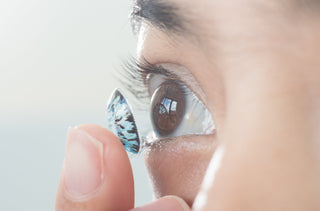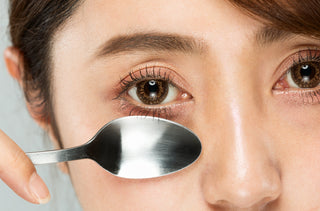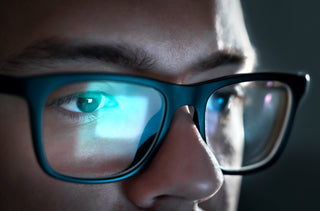Do you have red, itchy or irritated eyelids? Do you wake up with scabs around your eyelashes? You may be suffering from blepharitis, a common but often overlooked eye condition. Although rarely serious, blepharitis can be very uncomfortable if not properly managed.
What is blepharitis?
Blepharitis is a chronic inflammation of the eyelid margins. It can affect one or both eyelids, occur over a short period or persist over time. It is often caused by:
- Bacterial overgrowth
- Seborrhea, or excessive sebum production,
- Dysfunction of the Meibomius glands, which produce part of the tear film,
- Skin diseases such as rosacea or seborrheic dermatitis,
- An allergy or reaction to a cosmetic product or contact lens.
Blepharitis can be anterior (affecting the outer edge of the eyelid, near the eyelashes) or posterior (affecting the Meibomius glands located inside the eyelid).
What are the symptoms?
Symptoms of blepharitis vary in intensity, but the most common are:
- Redness and swelling of the eyelids
- Burning or gritty sensation in the eyes
- Itchy eyes
- Tearing or dry eyes
- Crusts at the base of the eyelashes
- Sticky eyelashes in the morning
- Sensitivity to light
- Temporary blurred vision
These symptoms may worsen in the morning or after long periods in front of a screen.
Is it contagious?
Blepharitis is not contagious, even if it is bacterial in origin. It's a local imbalance of the tear film and the eyelid environment. However, good hygiene is essential to prevent symptoms from worsening or recurring.
How can it be treated and prevented?
Management of blepharitis relies mainly on a daily hygiene routine. Although there is no definitive cure, good management can significantly reduce symptoms.
Eyelid hygiene
This is the key to treatment. Here are some tips you can do at home:
- Apply warm compresses to the eyelids for 5 to 10 minutes to liquefy secretions.
- Gently massage the eyelids towards the edge of the eyelashes to help evacuate glandular contents.
- Clean eyelid margins with a cotton swab soaked in a mild cleanser, lukewarm water or a specific eyelid hygiene product (available in pharmacies).
Drops or ointments
Depending on the case, your eye care professional may recommend:
- Artificial tears to relieve dry eyes.
- Local antibiotics (drops or ointment) in case of serious bacterial infection.
- Short-term corticosteroids if inflammation is severe.
Complementary care
- Avoid wearing make-up during flare-ups.
- Change your pillowcases and towels regularly.
- Eat a diet rich in omega-3s, which can promote the health of the Meibomian glands.
When should you seek advice?
If your symptoms persist despite good hygiene, if they worsen or are accompanied by pain, intense redness or changes in vision, consult an optometrist. A proper examination will help you rule out other causes and adapt your treatment.
Blepharitis is a chronic but manageable eye condition. A rigorous hygiene routine and the right care can help you live comfortably with this condition. If you suffer from symptoms suggestive of blepharitis, don't hesitate to consult an optometrist for a diagnosis and personalized advice.





















































